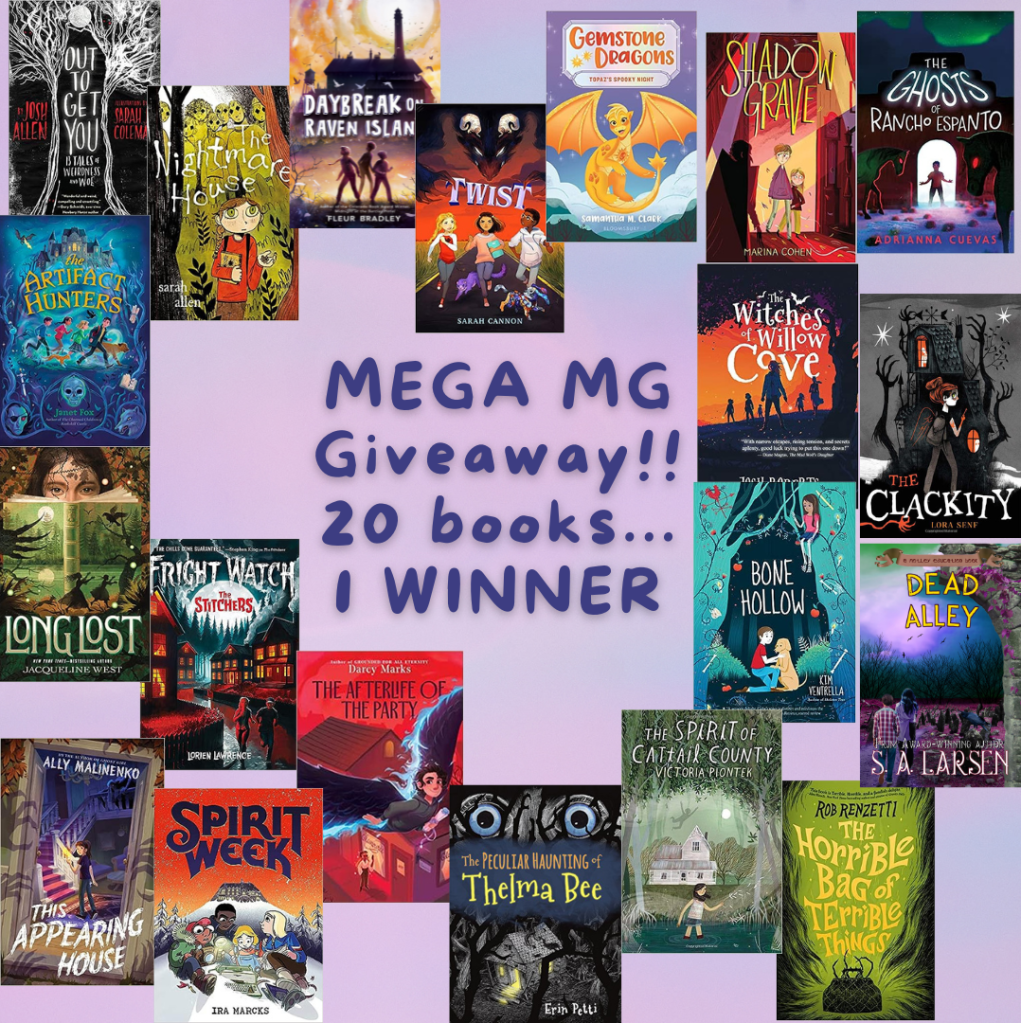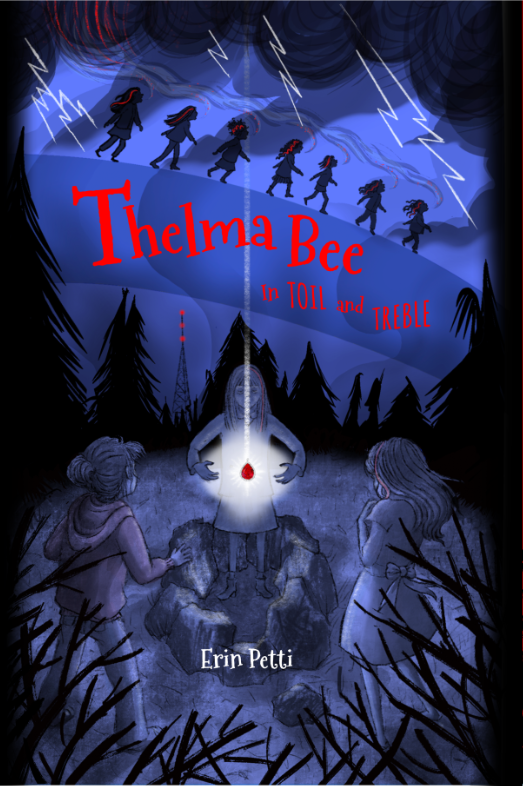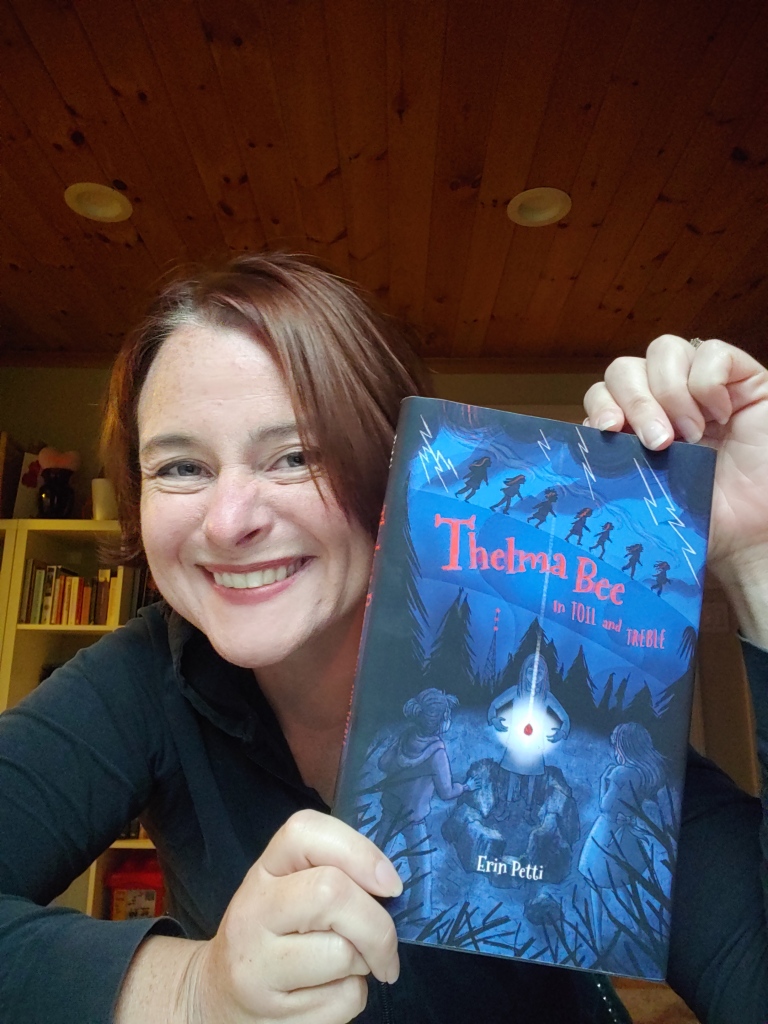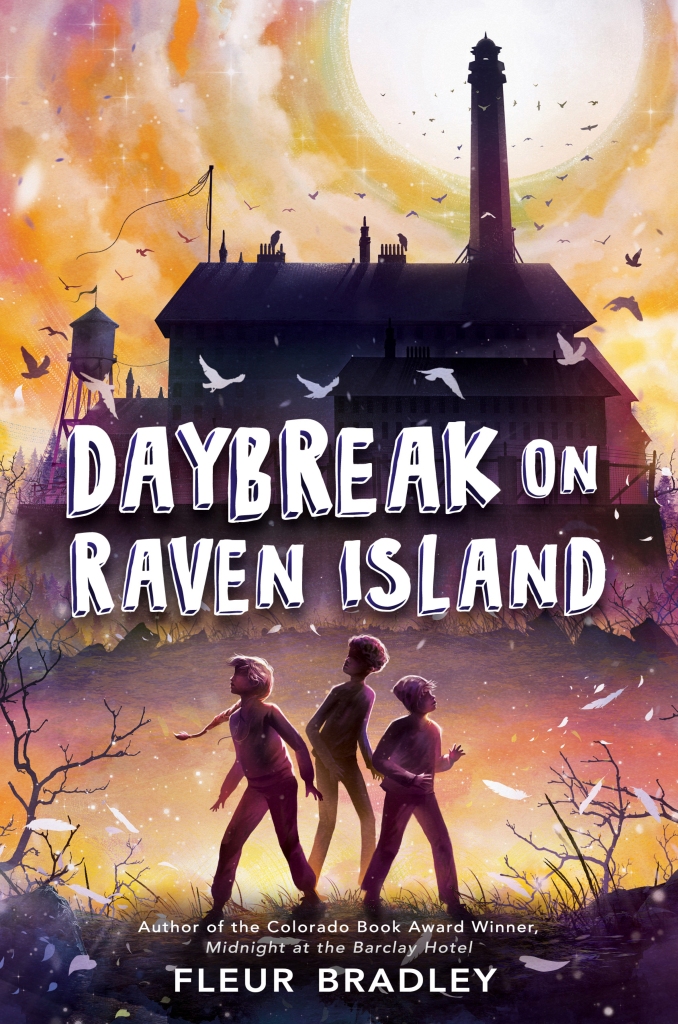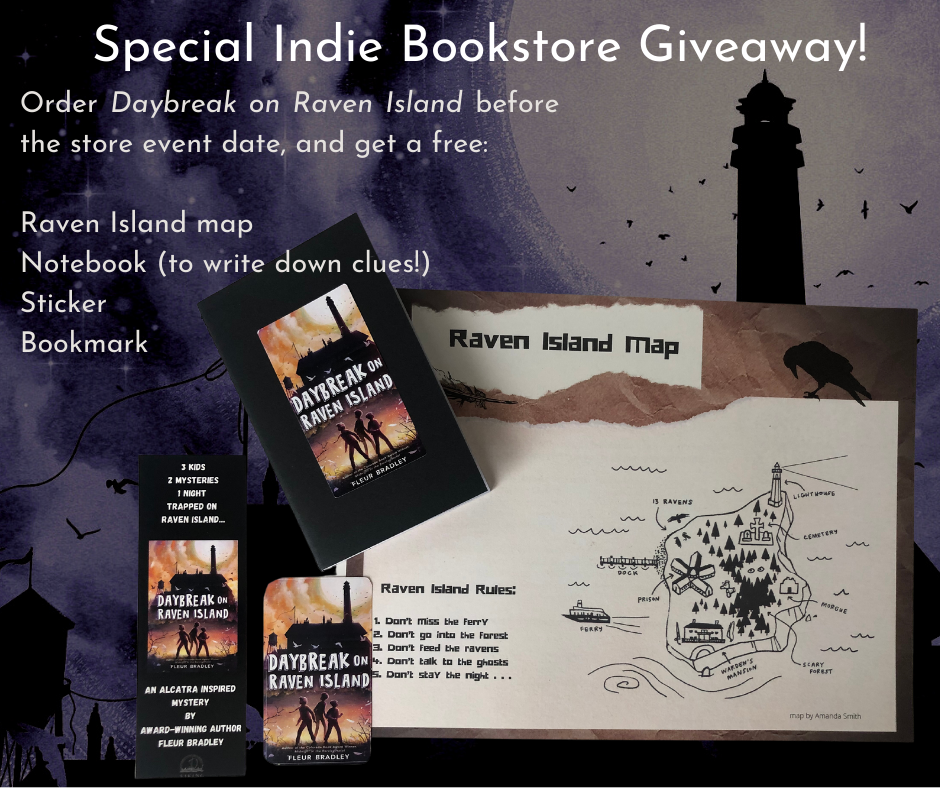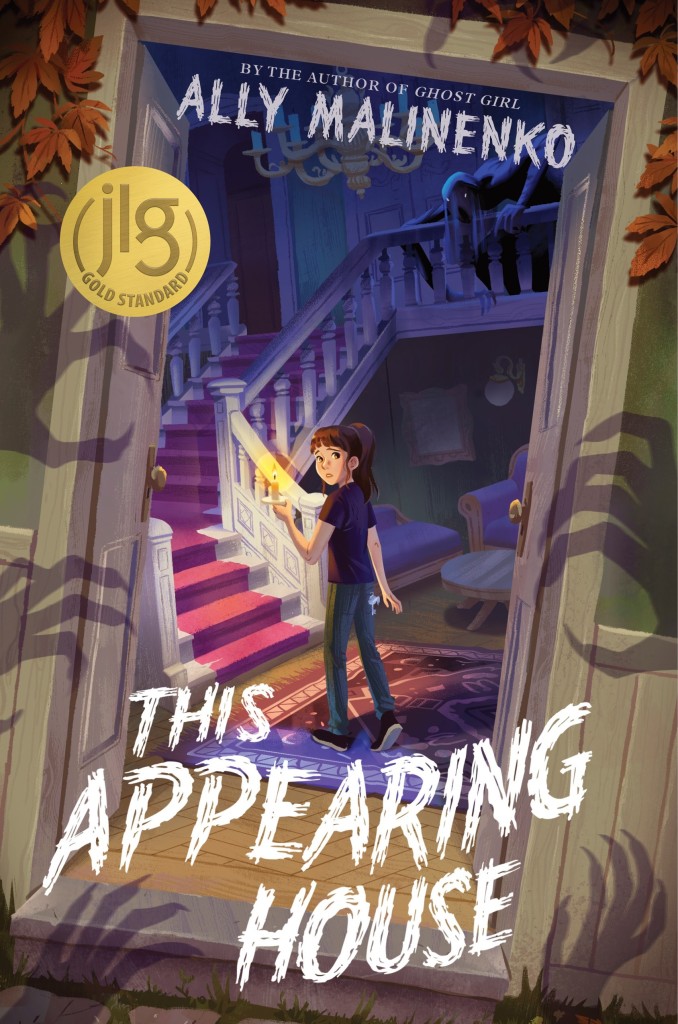This week, I chatted with Matt about his debut middle grade novel MONSTERIOUS: ESCAPE FROM GRIMSTONE MANOR—Available May 9th. (Penguin Kids) I am so excited for all our spooky friends to meet him and read his books.
Enjoy!
Tell us about the Monsterious: Escape From Grimstone Manor.
Escape from Grimstone Manor (Monsterious #1) is about three friends who sneak off to their local amusement park, where adventurous Taylor convinces cool-headed Zari and timid Mateo to go on the Grimstone Manor haunted house ride before the park closes. When the ride breaks down, they’re inadvertently trapped inside overnight. While searching for an exit, they stumble upon a hidden staircase leading down to an ancient crypt beneath the manor, filled with mummies, sword-carrying skeletons, and creepy statues. They begin to piece together the mystery of Hezekiah Crawly, the necromancer of local legend whose mansion once stood on the site of the ride. A clash between Mateo and Taylor leads to the release of a long-dormant magic that brings Hezekiah’s monstrous creations to life, turning the friends’ day of fun into a life-or-death race to escape Grimstone Manor.
How did you come up with the idea for a series?
My author wife Lisa McMann was reading an article aloud and mispronounced the word “mysterious,” saying “monsterious” instead. I said, “That sounds like a great middle grade book title,” and she replied, “No, it’s a whole series, and you should write it.” As a lifelong fan of monsters and mysteries, I decided to go for it! I began to brainstorm ideas of what a middle grade monster mystery series would look like.
How do you develop your plot and characters?
Many of my plots start with great settings. I saw a photo of a gargoyle statue advertising a haunted house amusement park ride and thought that would be a great setting for a Monsterious book. I asked myself what unusual or spooky thing could happen there—what if the ride broke down? What if kids were trapped inside overnight? What if the monsters came to life? Then I knew I had a story.
It was a similar process with Terror in Shadow Canyon (Monsterious #3, publishing 8-22-23), which was inspired by my hike through a spooky forest in Vancouver. It’s about five hikers lost in a remote wilderness area who are stalked by a flesh-eating monster. The idea for Monsterious #4, The Beast of Skull Rock (Jan 2024), came from an article I read on a famous cabinet of curiosities museum in Paris. That book is about a brother and sister who attempt to save their grandfather’s spooky cabinet of curiosities museum from a rampaging werehyena.
For characters, I start with the motto “Different is interesting!” If I’m writing about three friends who have a spooky adventure, I like to make them different genders, different ethnicities, different appearances, different abilities, different personalities. I do this because:
1. They will react differently to the same situation—when they encounter something frightening, one character may remain calm while another panics, which can bring tension between them. You need conflict in a story to make it interesting.
2. Their different abilities can help get them out of a variety of difficult situations which can help advance the story.
3. I want as many of my readers as possible to see themselves on the page. No matter who we are, we all deserve to see ourselves reflected in books.
How did you map out the series?
I decided to create an anthology style series, where the books are tied together by a common theme, spooky monster mysteries, but each is a stand-alone adventure with a unique cast of characters. I liked the freedom that gave me to write about any monster, in any location, with any characters. I also knew that if the series finds a strong readership, I could run with it for a long time because I wouldn’t be bound by a single, multi-book story arc as you have in a traditional dynamic style series.
With that format in mind, I brainstormed ideas for potential books. Some I based on settings, while others I based on a catalytic event. For example, when my wife and I once saw an abandoned stroller along the highway, she said, “What if there was a baby in there?” I remembered that and asked myself how an abandoned stroller could be spooky. What if it was abandoned because the baby who used it had disappeared? What if the kids who discover it learn that other babies in town had disappeared? What if the kids realize a monster is responsible but no one believes them? That became The Snatcher of Raven Hollow (Monsterious #2).
To really sell the series vision to my agent and potential editors, I created a pitch package of one full manuscript, complete outlines of two more books, and five additional book ideas of one paragraph each. After my first three books had collected only a long list of rejections, Monsterious sold immediately in a four book deal to Penguin Random House, which was a lifelong dream come true!
What part of the series was the most fun to write?
Monsterious books are short, fast-paced thrillers, with lots of action, humor, and heart. I love writing the spooky action, the cliff-hanger chapter endings, and the unsettling twist at the end of each story.
How much of your real-life experiences play a role in the stories you tell?
Most of the books I write start from a setting I encounter, an experience I have, or something I observe. Of my three unpublished books, the first came from a loose tile in our floor, the second from seeing a giant fence, and the third from a dream!
With my characters, who I am influences how I write them, either as a reflection of me with similar characteristics, or the opposite, creating characters that have traits I aspire to or reject.
What books did you like to read when you were a kid?
I was a big fantasy and sci-fi reader growing up. My sister gave me The Earthsea Trilogy by Ursula K. LeGuin, which hooked me on the fantasy genre. I was obsessed with The Lord of the Rings by Tolkien, and C. S. Lewis, both the Narnia books and the Space Trilogy. Then I discovered classic horror, like Frankenstein and Dracula, and checked out every book in the library on Bigfoot, Yeti, the Loch Ness Monster, vampires, ghosts, and werewolves. I’ve been a monster fan ever since!
What advice would you give a new writer?
Write what you love. Don’t chase a trend or what you think you should write or what other people say you should write. Passion shows on the page. Also, if you’re fortunate enough to get a book deal, you’re going to have a long relationship with your books—the drafting, the many rounds of edits, and years promoting and talking about them. It really helps if you actually like them!
Find a way to study the craft of writing that appeals to you. For example, most writing craft books make me fall asleep, but I enjoy writing videos and listening to authors talk about writing.
Experiment with different genres, POVs, structures, story lengths. Allow yourself to learn what kind of writer you are and find your unique voice. As a perfectionist, learning to embrace bad first drafts was hard for me, but they call them “rough” drafts for a reason. Every great author edits a ton, so embrace it!
Finally, persevere. When I was mired in the submission trenches, so many of my published friends told me one of the main things that separates published authors from aspiring authors is that published authors didn’t quit.
What are you hoping readers will take away from your stories?
My love of spooky adventures came from being a scared kid. I was afraid of all kinds of things—the dark, bullies, the basement, the woods. Reading those types of stories gave me a way to experience fear in a safe, controlled, and fun way. Seeing book characters face their fears gave me courage to face my own.
I hope readers find that same encouragement and inspiration in my stories that I found in books growing up. I also want them to have a fun, spooky, adventure that fires their imaginations and their own creativity!
What is your biggest challenge as a debut author?
Marketing! One of the biggest eye-openers for me as a debut is how much of the success of the book in terms of sales is up to me. My publisher Penguin Random House (Putnam) is great and has been very supportive, but it only works as a team effort. There are SO many books out there and SO many other things vying for readers’ attention—if I want my books to cut through the noise enough for people to actually buy, read, and talk about them, then I have to put in the work.
The counterbalance is there are many factors that influence book sales that are out of my control—market conditions, publisher budgets, trends, word of mouth, etc. And marketing feels like a task that’s never done because there IS no done. You can always do more interviews, more podcasts, more social media, more giveaways, more bookseller and librarian outreach, more school visits, more events, more advertising. You have to define your own “done,” and trust that your books will find their way.
What are you working on now?
Honestly, marketing! I just turned in copy edits on Monsterious book 4, which is my last book under contract, so I’m focused on the release of the first two Monsterious books on May 9. I’ll be touring with my wife Lisa McMann in Arizona, Michigan, Washington, and California. If these first two books catch, that could open the door to writing more books in the Monsterious series which is the dream!
What advice would you give 12 year-old Matt?
You’re braver than you know, and it’s going to be okay.
To learn more about Matt McMann, please visit his Linktr.ee
